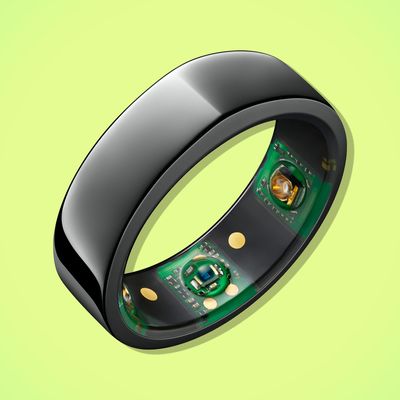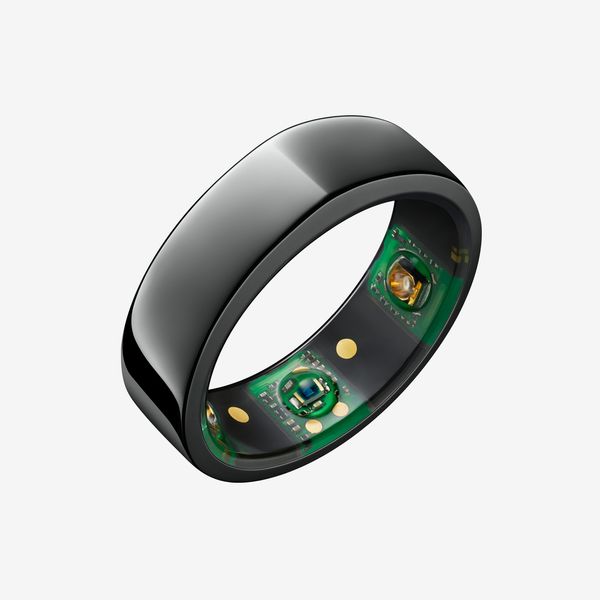
When the NBA announced its plans last month for safely resuming league play, the new guidelines noted that athletes would receive a new piece of gear ahead of their return to the court. It’s not a mask or a face shield but a “smart ring” from Oura, a Finnish company that debuted the gadget in 2018 as a way for people to track their vital signs (including heart rate, respiratory rate, and temperature) and sleep patterns. Before the league’s announcement, the pricey, futuristic ring seemed little more than the latest accessory for folks you’d expect to traffic in pricey, futuristic rings — billionaires, royalty, longevity doctors, tech CEOs. But once the league said it would provide Oura rings to all its athletes (who are not required to wear them, though), interest exploded in the gadget as a potential way to detect symptoms of COVID-19. Which got us wondering: Is this thing really any better than other health trackers on the market, and does it do any more than, say, a thermometer or pulse oximeter would to help you self-monitor for possible symptoms of the disease?
To find out, we consulted seven experts, including infectious-disease doctors, sleep scientists, tech journalists, and Oura users. Their feedback was surprisingly consistent. They say the most helpful thing about the Oura ring is that it can provide your doctors with far more details about your recent health than they would normally access during a visit, which can, in turn, help better determine if that high heart rate they’ve just measured is due to a new condition, the anxiety that comes with living through a historic pandemic, or your rushing to get to the appointment. But even though the data the ring provides are actionable, most of our experts say the device wouldn’t be more helpful in identifying cases of the often symptomless COVID-19 — or even provide better insights about how you sleep than you can get from free apps or common sense.
Still, the experts did agree that for those who subscribe to the type of data-driven lifestyle that such health-tracking devices support, the Oura — the only expert-vetted, ring-shaped tracker on the market — represents one of the most impressive, least-intrusive health trackers in terms of its design. Dr. Seema Khosla, the medical director at North Dakota’s Center for Sleep, says that because it’s a ring, the product is far more likely to be used consistently than trackers worn on the wrist. “A few years ago, I spoke with Fitbit’s lead sleep scientist, Conor Heneghan, and he told me the most challenging thing was getting people to wear it at night,” says Khosla. “People don’t like to sleep with things on their wrist.”
What does the Oura ring actually do?
Speaking of Fitbit, you may be wondering what specifically the Oura ring offers that it and other health-tracking devices, like the Apple Watch and WHOOP wristband, do not. (Obviously, the Apple Watch has lots of unique features that none of these devices have, but for the sake of this article, we’re focusing on its health-tracking ability.) Just like those devices, the Oura ring is water resistant and works in tandem with an app to display statistics like your step count, active and passive calorie burn, sleep quality, and respiratory rate. The Oura also tracks your heart-rate variability, which shows how your nervous system is functioning. The other devices track HRV too, but Oura claims to do it better because the thinner skin on the finger makes it easier for the ring to consistently detect the wearer’s blood flow (this is the same reason doctors place a pulse oximeter on patients’ fingers).
Beyond its unique shape, the biggest thing the Oura has that the other devices don’t is a gauge of body temperature, through which it can warn wearers about the potential onset of a flu or fever. The Oura is also the only device that blends all its statistics into an algorithm that then generates a “readiness score” for the wearer’s day ahead (think of it as a human equivalent to the iPhone’s battery-percentage indicator).
The Oura ring and Covid-19
As for the ring’s use in detecting symptoms of COVID-19, Dr. David Hirschwerk, an infectious-disease specialist at North Shore University Hospital, stresses that while it’s “conceivable that it could provide clues that someone is ill, such as a raised heart rate or temperature, it does not replace diagnostic testing” for the virus — especially because the symptoms it picks up could be indicators of any number of ailments. “It may play some very minor role,” he says, “but I can’t see at this moment that it has significant value in identifying COVID-19 specifically. These new technologies would have to advance considerably to allow us to use them medically.” Another reason he says the ring cannot be totally relied on to monitor symptoms of COVID-19 is that this virus has so many asymptomatic carriers. “If the technology doesn’t trigger a finding, it doesn’t mean they don’t have the infection,” Hirschwerk explains. As Oura user Dan Frommer — the founder of the New Consumer and former editor-in-chief of Recode — puts it, “If you’re looking for detailed investigative analysis, you’re not going to get it from a device.”
Dr. Girish Nadkarni, the clinical director of the Hasso Plattner Institute for Digital Health at Mount Sinai, was not so quick to write off the ring’s use in a pandemic. He says the type of precise, broad data the Oura pulls can be helpful as researchers study how humans recover from the virus. “I honestly believe COVID-19 is going to transition to being a chronic disease,” Nadkarni says, “because lots of people who’ve had it have seen it in their lungs after. These technologies will be important to learn what happens with patients over time.” He mentions that studies on the ring are under way (the two most prominent are happening at the University of California San Francisco School of Medicine and West Virginia University) and says their outcomes could change what we know about how this product can help to manage the spread of the virus. “If the product is tested, with findings rigorously implemented, we will then be able to jump the gap between it being a fitness and lifestyle accessory and a medical way to track and monitor your health,” Nadkarni explains. But he is quick to caution that even if these studies produce promising results, the ring’s price makes it something not everybody can wear: “We need to make sure patients of all backgrounds have access, to make sure the data we’re using does not account for only a small subset of the population.” But if these studies’ results “are found to be efficacious and safe,” he continues, there’s a chance the ring “could be reimbursed by insurance.”
The Oura ring and day-to-day health
Nadkarni told us that when he and other doctors see patients, they typically have only the results of tests run at those appointments and any additional information the patients provide as data to consider in making a diagnosis. “I have to make treatment decisions based on that 30-minute visit with little idea what they’ve done 30 minutes prior,” he explains. “Have they been running or had coffee?” He compares this process to “looking at one pixel in an image and trying to figure out what the whole image is.” But if patients wore an Oura ring, he continues, it could help him make an even more informed diagnosis. “You’re not going to walk around with a thermometer — it’s just a point-in-time measurement,” he explains. “But there’s a lot of valuable information in temporal data,” the kind that wearable health trackers like the Oura collect over time.
When we spoke with ring wearers, two told us about times they saw their data change on the Oura app in the days before they became ill. “I saw that I was getting sick, ended up training anyway and then I ended up being really sick,” Kevin Bass, a Ph.D. student and the host of the Diet Wars podcast, tells us. CNBC health-and-tech reporter Christina Farr, who tested out a ring, says, “There is an aspect to which you can sort of try to get ahead of being sick: If you’re feeling rundown and the ring is telling you certain things about your health, you maybe would not go out that night.” Bass also says the ring’s heart-rate tracker is “excellent,” especially for monitoring what happens with changes in diet. “I recently stopped drinking caffeine after 10 a.m. — I used to drink a cup at 2 p.m. — and my resting heart rate is much lower now.”
When it comes to the ring’s performance as a sleep tracker, Dr. Khosla and our Oura users gave mixed feedback. While they acknowledge that the ring’s sleep tracking is accurate and provides interesting insights, they admit the Oura app won’t tell you anything you don’t already know about how to sleep better. As Farr puts it, “A lot of the insights I got were things I would have guessed at anyway, like that I don’t sleep well after I drink. The data just made my conclusions feel validated.”
So why invest in an Oura ring?
A consistent point of praise for the Oura is its innovative design: Almost all our experts mentioned being impressed by the way Oura’s data can be gathered from just a finger, as opposed to a wrist, while remaining unobtrusive. (“I can type with it,” Frommer says, praising its compact, functional size.) The users we spoke to also pointed out the ring’s seven-day battery life — you need to recharge an Apple Watch daily, Farr notes, and Fitbit doesn’t promise a full week on a single charge, just five to seven days.
For these reasons, some experts say the Oura ring’s design is the best thing about it because any health tracker’s effectiveness is directly related to how much someone wears it. “Wearable tech is one of things where you have to consistently use it in order to make it make sense,” says Farr. “We mostly see wrist-worn devices, but the ring was easier — still a bit bulky, but it didn’t look too bad.” (Though she warns the ring’s smallest size may still be too big for some women’s hands because “wearables in general tend to be designed by men for men.”) While the Oura isn’t the only ring-shaped tracker out there, it’s the only commercially available one that medical experts are paying attention to; its biggest competitor, the Motiv ring, was pulled from the consumer market in April.
The Strategist is designed to surface the most useful, expert recommendations for things to buy across the vast e-commerce landscape. Some of our latest conquests include the best acne treatments, rolling luggage, pillows for side sleepers, natural anxiety remedies, and bath towels. We update links when possible, but note that deals can expire and all prices are subject to change.







